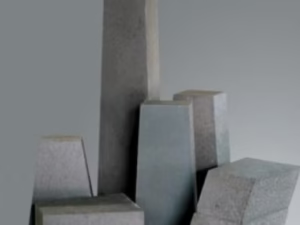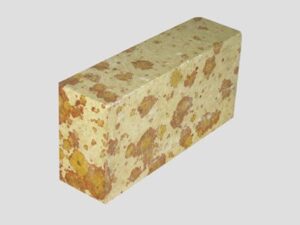Description
Ceramic Fiber Blankets: Versatile Insulation Powerhouses
In the world of high-temperature applications, ceramic fiber blankets stand out as versatile and indispensable insulation materials. From lining industrial furnaces to safeguarding sensitive equipment, these blankets provide exceptional thermal performance, contributing to energy efficiency, safety, and overall operational effectiveness.
What are Ceramic Fiber Blankets?
Ceramic fiber blankets are lightweight, flexible materials composed of interwoven ceramic fibers. These fibers, typically made from alumina-silica, are processed into a blanket-like structure, creating a highly porous and air-filled matrix. This unique structure is the key to their superior insulation properties.
Key Properties and Advantages:
- Exceptional Thermal Insulation: Ceramic fiber blankets excel at reducing heat transfer through conduction, convection, and radiation. Their low thermal conductivity allows them to effectively block heat flow, maintaining desired temperatures within enclosed spaces.
- High-Temperature Resistance: Designed to withstand extreme temperatures, these blankets can perform reliably in environments up to 2300°F (1260°C) or even higher, depending on the specific grade and composition.
- Lightweight and Flexible: Their lightweight nature makes them easy to handle, cut, and install. The flexibility allows them to conform to irregular surfaces and shapes, ensuring complete coverage.
- Thermal Shock Resistance: Ceramic fiber blankets can withstand rapid temperature changes without significant degradation, making them suitable for applications involving cyclical heating and cooling.
- Chemical Resistance: They exhibit good resistance to most chemicals, excluding hydrofluoric acid, phosphoric acid, strong alkalis, and vanadium pentoxide.
- Low Heat Storage: Due to their low density and high porosity, ceramic fiber blankets store minimal heat, leading to faster heating and cooling cycles, and reduced energy consumption.
- Sound Absorption: In addition to thermal insulation, ceramic fiber blankets also offer some degree of sound absorption, contributing to a quieter working environment.
Diverse Applications Across Industries:
The versatility of ceramic fiber blankets makes them valuable in a wide range of industries, including:
- Industrial Furnaces & Ovens: Lining furnaces, kilns, and ovens to minimize heat loss, improve energy efficiency, and maintain consistent temperatures.
- Refining and Petrochemical: Insulating pipes, vessels, and reactors to maintain process temperatures and prevent heat-related accidents.
- Power Generation: Insulating boilers, turbines, and exhaust systems to improve energy efficiency and protect personnel.
- Automotive: Used in exhaust systems as thermal barriers to reduce emissions and protect surrounding components.
- Aerospace: Providing thermal protection for aircraft engines and other high-temperature components.
- Glass and Ceramics: Insulating melting furnaces and annealing ovens to control cooling rates and prevent cracking.
- Construction: Fireproofing structural steel and protecting building components from fire damage.
Installation and Handling:
While relatively easy to handle, ceramic fiber blankets require proper installation and safety precautions. When working with these materials, it’s essential to:
- Wear appropriate personal protective equipment (PPE): This includes gloves, respirators, and eye protection to minimize exposure to loose fibers.
- Follow manufacturer’s recommendations: Adhere to guidelines for cutting, shaping, and securing the blankets.
- Ensure proper ventilation: Work in well-ventilated areas to reduce the inhalation of airborne fibers.
- Consider specific fastening methods: Choose appropriate adhesives, pins, or mechanical fasteners based on the application and temperature requirements.
Choosing the Right Blanket:
Selecting the right ceramic fiber blanket is crucial for optimal performance. Factors to consider include:
- Maximum service temperature: Match the blanket’s temperature rating to the highest temperature it will encounter in the application.
- Density and thickness: Choose the appropriate density and thickness to achieve the desired level of insulation.
- Chemical compatibility: Ensure the blanket is compatible with the chemicals it will be exposed to.
- Fiber composition: Select a fiber composition suitable for the specific application, considering factors like shrinkage and resistance to specific environments.
Conclusion:
Ceramic fiber blankets are powerful tools for managing heat in demanding environments. Their unique combination of properties – exceptional insulation, high-temperature resistance, lightweight design, and versatility – makes them essential materials for a wide range of industries. By understanding their characteristics and proper application, businesses can leverage these insulation powerhouses to improve energy efficiency, enhance safety, and optimize operations. As technology advances, we can expect further innovation in ceramic fiber blanket materials, broadening their applications and solidifying their role as cornerstones of thermal management.















Reviews
There are no reviews yet.